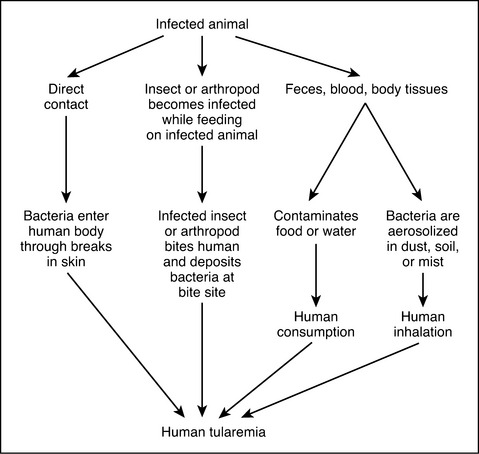TULAREMIA
Tularemia is a bacterial infection, commonly known as rabbit fever or deer tick fever. The disease is endemic to certain areas of the United States and is highly infectious. It has been identified as a possible agent of biological warfare in aerosol form. As few as 10 organisms can cause disease.
TRANSMISSION
Ticks have become the most important vector for transmission of tularemia to humans and domestic animals. They also act as a reservoir to carry F. tularensis from one geographic area or group of animals to another. Exposure to infected rabbits is the second most common source of tularemia. Horse flies, biting flies, sucking lice, and mosquitoes are other vectors, but not as important as ticks (Figure 48).
F. tularensis can also be aerosolized by riding on particles of dust or mist and can be inhaled. This happens most often during gardening, landscaping, construction, or any activity that disturbs soil. Another less common mode of transmission is handling infected animals or tissues in a laboratory. Person-to-person transmission does not occur.
TULAREMIA IN ANIMALS
WILD RABBITS, HARES, AND RODENTS
Wild rabbits, hares, and rodents are very susceptible to F. tularensis infection and are often found dead, having exhibited no observable clinical signs. When clinical signs are present, they include depression, anorexia, incoordination, roughened hair coat, and huddling. Pet rabbits and rodents rarely develop tularemia if they are kept indoors.
Stay updated, free articles. Join our Telegram channel

Full access? Get Clinical Tree



